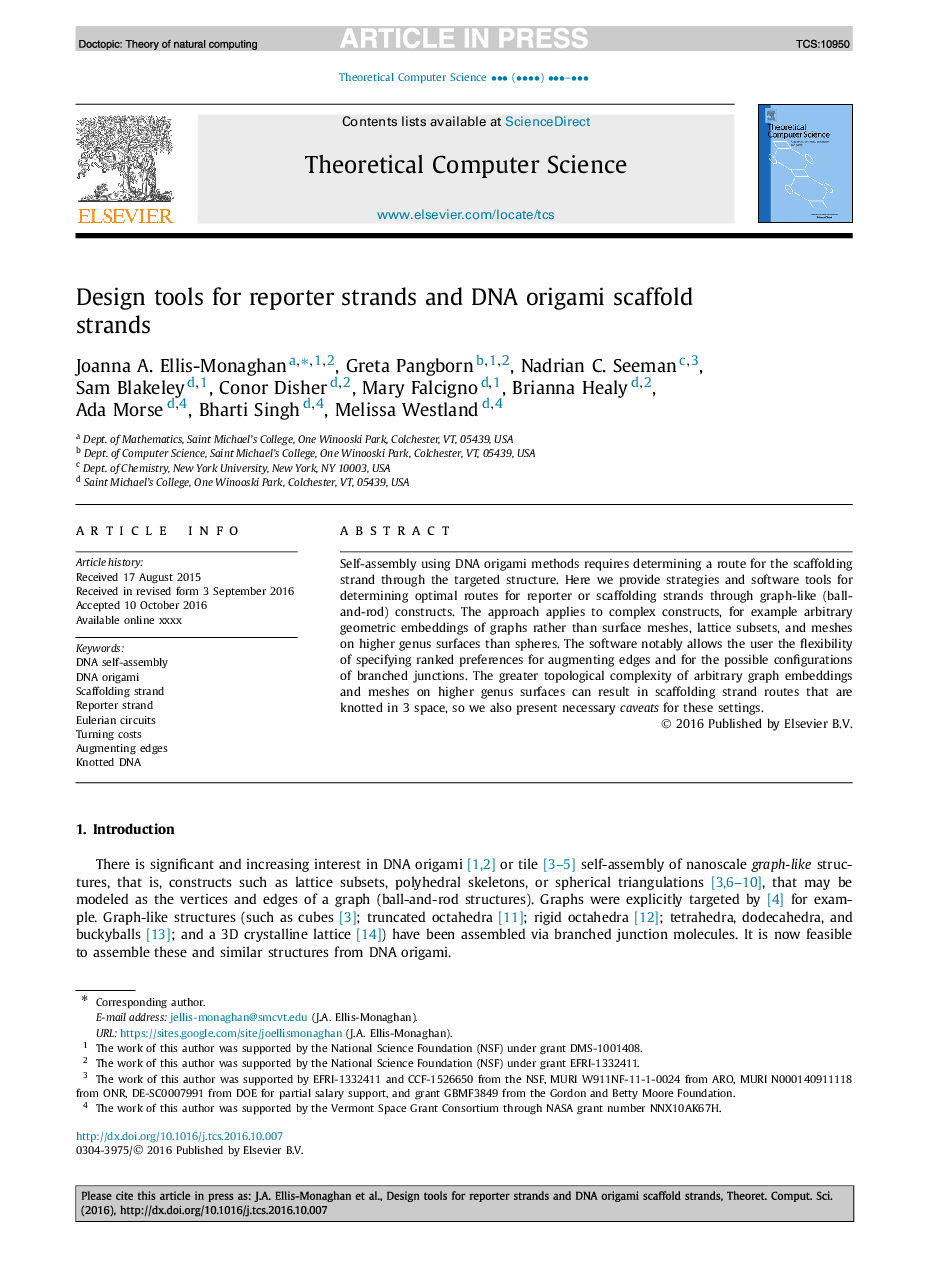| Article ID | Journal | Published Year | Pages | File Type |
|---|---|---|---|---|
| 4952180 | Theoretical Computer Science | 2017 | 10 Pages |
Abstract
Self-assembly using DNA origami methods requires determining a route for the scaffolding strand through the targeted structure. Here we provide strategies and software tools for determining optimal routes for reporter or scaffolding strands through graph-like (ball-and-rod) constructs. The approach applies to complex constructs, for example arbitrary geometric embeddings of graphs rather than surface meshes, lattice subsets, and meshes on higher genus surfaces than spheres. The software notably allows the user the flexibility of specifying ranked preferences for augmenting edges and for the possible configurations of branched junctions. The greater topological complexity of arbitrary graph embeddings and meshes on higher genus surfaces can result in scaffolding strand routes that are knotted in 3 space, so we also present necessary caveats for these settings.
Keywords
Related Topics
Physical Sciences and Engineering
Computer Science
Computational Theory and Mathematics
Authors
Joanna A. Ellis-Monaghan, Greta Pangborn, Nadrian C. Seeman, Sam Blakeley, Conor Disher, Mary Falcigno, Brianna Healy, Ada Morse, Bharti Singh, Melissa Westland,
